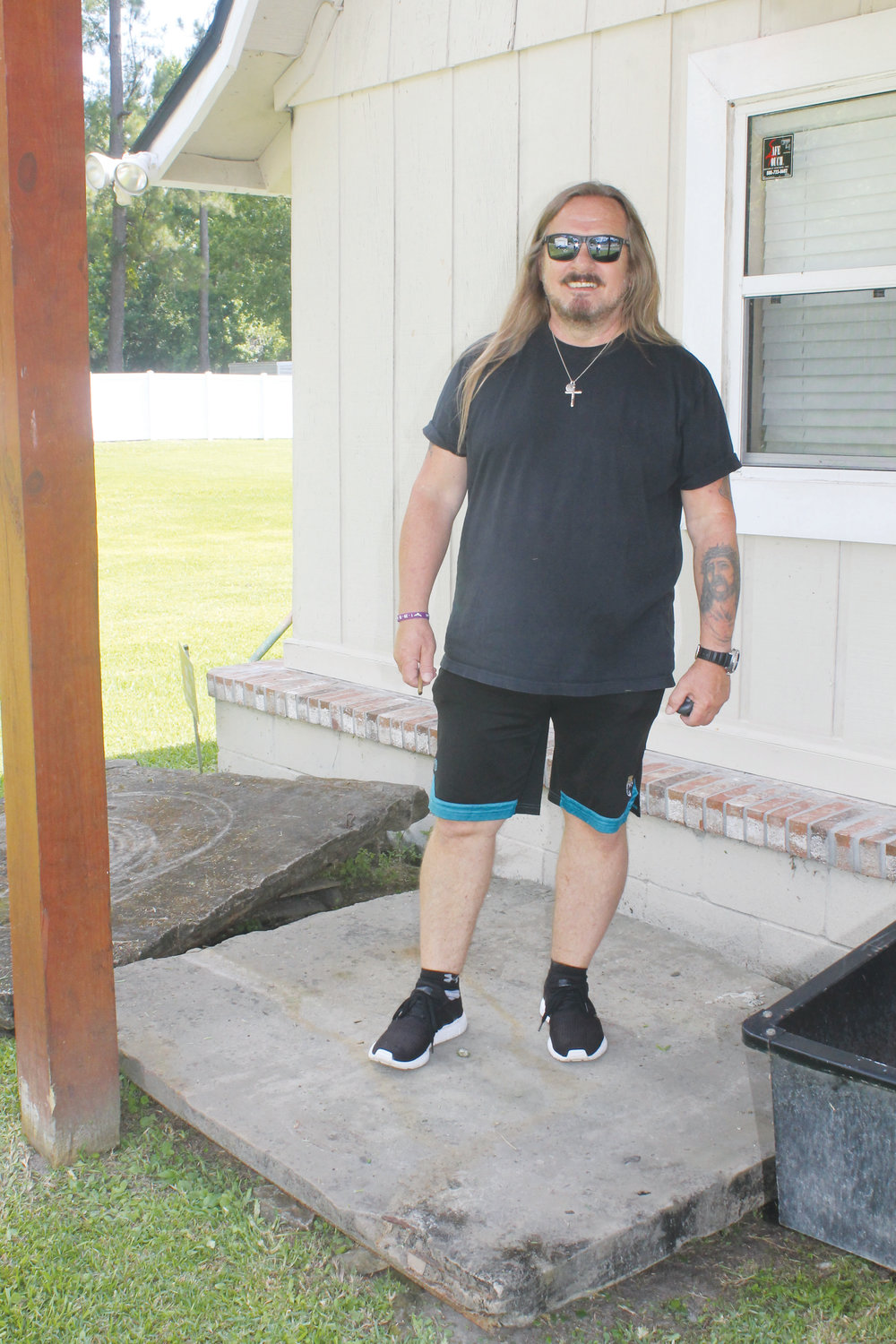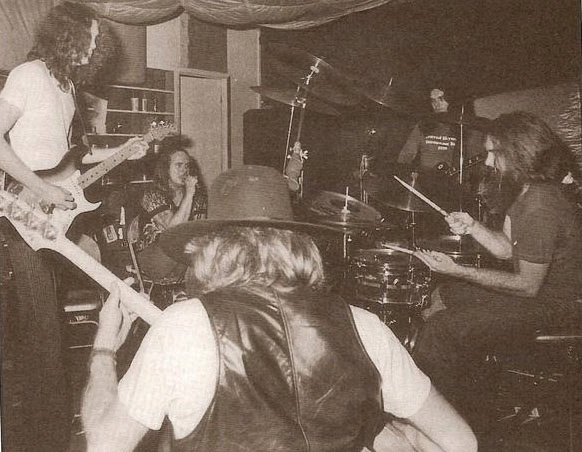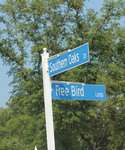Bulldozers can’t wipe away the musical history of Hell House
Many of Lynyrd Skynyrd’s most-popular songs written at famed shack in GCS
GREEN COVE SPRINGS – Many of the mossy oaks are gone, replaced by three-car garages, screened-in porches and swimming pools. The loud, ear-splitting shrieks of wild animals have turned into a …
This item is available in full to subscribers.
Attention subscribers
To continue reading, you will need to either log in to your subscriber account, or purchase a new subscription.
If you are a current print subscriber, you can set up a free website account and connect your subscription to it by clicking here.
If you are a digital subscriber with an active, online-only subscription then you already have an account here. Just reset your password if you've not yet logged in to your account on this new site.
Otherwise, click here to view your options for subscribing.
Please log in to continueDon't have an ID?Print subscribersIf you're a print subscriber, but do not yet have an online account, click here to create one. Non-subscribersClick here to see your options for subscribing. Single day passYou also have the option of purchasing 24 hours of access, for $1.00. Click here to purchase a single day pass. |
Bulldozers can’t wipe away the musical history of Hell House
Many of Lynyrd Skynyrd’s most-popular songs written at famed shack in GCS
GREEN COVE SPRINGS – Many of the mossy oaks are gone, replaced by three-car garages, screened-in porches and swimming pools. The loud, ear-splitting shrieks of wild animals have turned into a benevolent spray from a water fountain at the main gate and children playing on a public playground.
The swampy banks of Peters Creek, once infested with snakes and gators, now has the civic polish of a community park, complete with a covered picnic area.
But if you close your eyes, some say you can still hear a bunch of kids from Jacksonville crafting a sound nearly 50 years ago that continues to blow speakers today.
The only semblance of Lynyrd Skynyrd’s famed Hell House are street names like Free Bird Loop, Southern Oaks Drive, Tuesdays Cove and Noble Court in the quaint Edgewater Landing subdivision. No matter how fast progress continued to pave over history, the band’s music always will be a landmark to one of the most-significant times and places in Clay County.
“I went there a few times when I was young,” said current Lynyrd Skynyrd frontman Johnny Van Zant. “What I do remember is it was named right: It was a Hell House. It was a square room. It was secluded.
“And the sheriff wasn’t after them.”
The band got tired of being hassled by the police when they played around their homes on Jacksonville’s Westside, so they found an abandoned shed deep in the woods to make their music. It was cramped and without air conditioning, but it was the perfect place away from distractions – not including thunderstorms that turned their tiny sweatbox into a sauna.
For Lynyrd Skynyrd, it was a magical place where songs like “Free Bird,” “Gimme Three Steps,” “Tuesday’s Gone,” “Simple Man” and “Sweet Home Alabama” were written.
For the fans who still fill amphitheaters and concert halls to hear Lynyrd Skynyrd, it’s a place that launched a legacy that continues to flourish.
Gary Rossington, an original member of the band, told the story of Hell House to Rolling Stone magazine in 2006. In it he said:
“Oh, man. We were rehearsing all around Jacksonville, and the cops kept coming, so we finally found this place way out in the woods, this cabin with a tin roof,” he said. “We didn’t have the money to buy an air conditioner, so it was hot. We’d sweat and sweat, and when it rained it was double bad, the humidity. It was just this old abandoned cabin.
“One night we got ripped off. Somebody came in and stole some amps and stuff. So, then we had to take turns staying out there overnight with a gun to protect the place. There were farm animals and snakes and alligators, out in the Everglades on a little creek. The owner was a real swamp boy. He’d go around and hit big rattlesnakes on the head, so we had a bunch of snakes in barrels. It was just a mess, but we got a lot of writing done there. We wrote most of the first album there, and the second one, too.”
Lynyrd Skynyrd eventually moved to recording studios to do their work. Hell House burned down and was bulldozed to make room for progress – but not before several fans, including the brothers of founding member Ronnie Van Zant, rescued their own piece of historic treasure.
Johnny and Donnie took a chunk of the concrete floor to preserve what was left. Local friends Terry Smiley, Mike West and Kurt Towne also took a chunk, while a piece of center-block wall now is on display at the Clay County Archives.
“It’s history,” Johnny said. “It’s incredible to think of all the things that happened on that floor. They were tearing the place down. We couldn’t let that go by.”
According to a forum posted online by former guitarist Ed King before he died last year, Ronnie Van Zant used to pick up band members at 8 in the morning and drive 28 miles for another grueling day at their musical boot camp.
Once they got there, the ear-shattering music – and the sweating – didn’t stop until long after sunset.
“We all had a lot of respect for what had been accomplished out there in the swamp,” King wrote.
King said he met a man named Lee Rollins, who also managed to take a piece of the concrete floor.
“Hasn't figured out what to do with it,” King wrote. “He thinks that slab holds a lot of energy from all the songs that were written there.”
Larry Junstrom played bass for Lynyrd Skynyrd at Hell House before he was replaced with Leon Wilkeson. Junstrom later joined Donnie Van Zant’s band, .38 Special, and he retired near Keystone Heights.
The county’s Southern Rock roots include more than Hell House.
Johnny and Donnie Van Zant have lived in Clay County for years, while Molly Hatchett guitarist Bobby Ingram lives at Lake Asbury.
And Lynyrd Skynyrd keyboardist Billy Powell, another Hell House alum, lived in Orange Park until he suffered a fatal heart attack in 2009.
But like everyone else who swatted mosquitos and created musical history at Hell House, Powell’s legacy forever will be memorialized by the band’s albums – and a few chunks of concrete.













